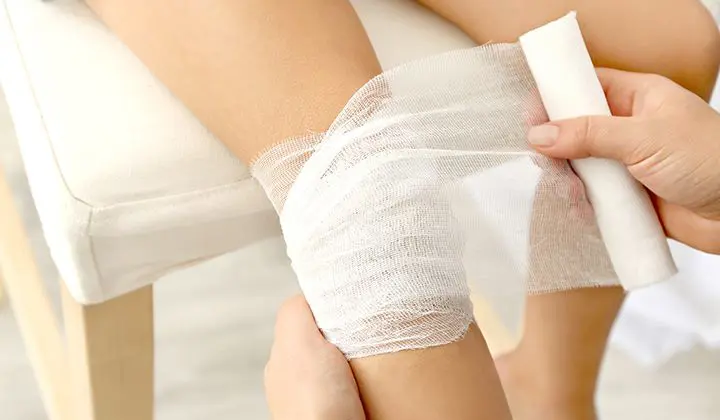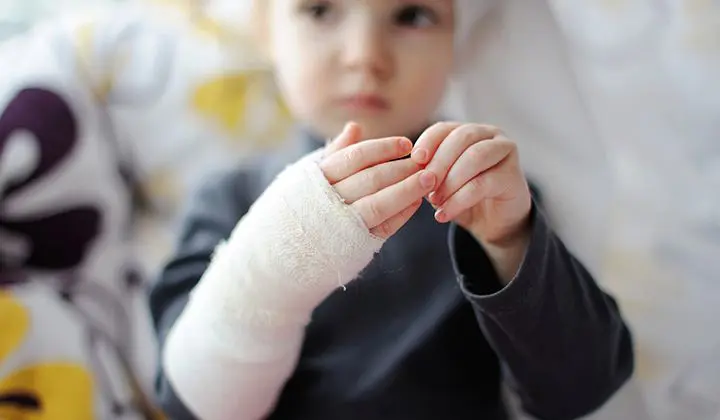Limb Injuries
Junior school-age children are likely to lead active lifestyles involving running, cycling and other sports. Children’s bones are more flexible than adults’, meaning they are better equipped to absorb shock and heal quicker. If your child has suffered an accident, learn what to do with our guide.

How do children injure their limbs?
Children are most susceptible to breaks between the ages of 11 and 15, when they may be experiencing a growth spurt. This makes bones more susceptible to breaks as they cannot always get the right amount of minerals to keep them strong.
However, it’s important to keep children safe at all ages, for example by giving them protective equipment such as elbow and shinpads. Certain activities are more hazardous than others, for example, trampolining. You should always supervise children during active play, using protective equipment such as an exterior net for trampolines or soft landings around bouncy castles.

What to do if your child has a limb injury
It’s not always possible to tell if your child has broken a limb, so you should try to calm them down and ask them what hurts. Look for symptoms such as swelling and check to see if your child is able to move the limb. If they cannot, this could be a sign of a fracture or a break. Make sure you stop any bleeding by applying pressure with non-fluffy material, such as a tea towel.
You should hold off giving your child pain relief until you have spoken to a doctor. You can help ease the pain in older children by applying an ice pack wrapped in a towel. Most importantly, you should not try to move the limb. You can fashion a makeshift sling to keep the limb in place while you’re travelling to the Accident and Emergency department or waiting for an ambulance.

Making your own sling
You don’t need to worry about having a specialised sling or bandages in the home. You can make your own using a scarf or another piece of clothing. Tie it around the injured limb and try to keep it elevated where possible, particularly if your child is bleeding.
There may not always be an adult immediately available if your child is out and about. Try to practise making your own slings at home to keep them safe. For example, you could tie their arm in a scarf and fasten it at the shoulders. Make sure the knots do not constrict the neck.
Even in warmer weather, encourage your child to take a long-sleeved jumper out with them to have to hand if they do suffer an injury.

After the injury
Once you have arrived at the hospital, your doctor may want to X-ray the arm or leg to check for signs of breaks. This may be frightening if your child has never seen hospital equipment, so you can ask to go into the X-ray room with them. Your doctor will give you a lead apron to wear to protect you from the radiation.
Depending on the injury, your child may need a splint or a cast. Fractures usually only require a splint to keep the bone still, whereas breaks may need a cast. Children’s bones heal quickly, so these may last from 4 to 10 weeks. Casts are usually made of plaster or fibreglass, which can be made waterproof with a lining.
Not being able to partake in daily activities may be distressing for your child. Try to make it fun by encouraging friends to sign the cast, or trying low-impact activities such as board games.
Quiz time for parents
Which of these can help to prevent limb injuries?
Congratulations
You've now completed the Young Learners module - well done! Click 'next lesson' to go back to the 'Early Years' module.

